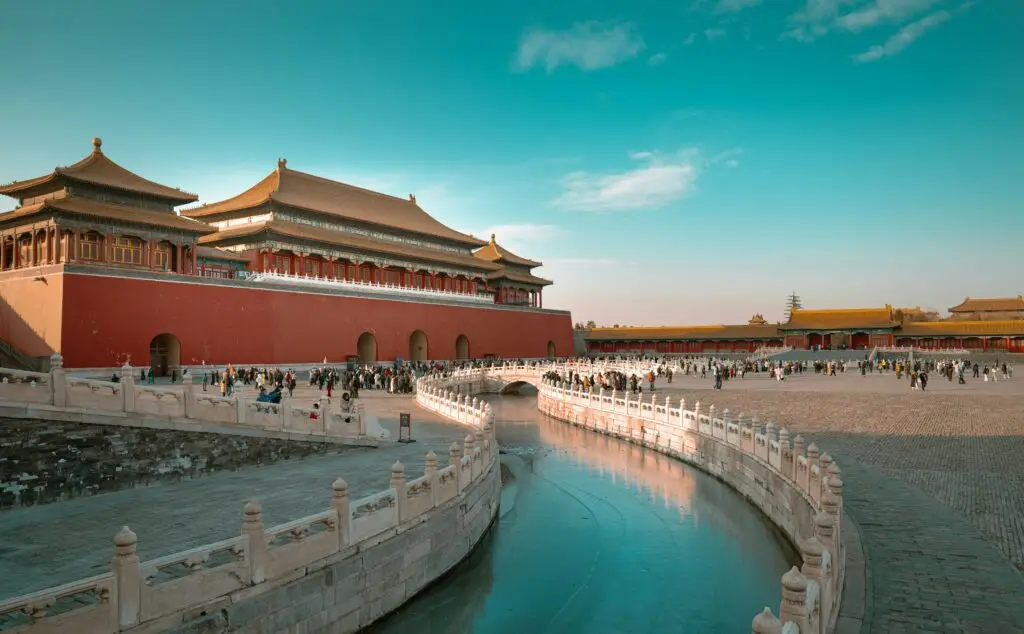The first steps onto the Hui–Hang Ancient Trail felt like stepping into a storybook. Morning mist clung to the mountains, wrapping the bamboo groves in soft silver, and the air smelled damp and fresh — a mix of earth, leaves, and spring water. I tightened my backpack straps, listened to the quiet drip of dew falling from the trees, and began the climb. This path, worn smooth by centuries of footsteps, once carried merchants between Anhui and Hangzhou. Today, it carried me, a traveler with nothing to trade but curiosity.
The ascent was steady, a staircase of uneven stone rising into the forest. My breath quickened, but the cool mountain air made each step feel alive. Bamboo rose like green pillars on either side, their leaves rattling softly whenever the wind passed. For a while, I walked alone, the only sounds the crunch of gravel underfoot and the distant song of birds echoing through the valley. I tried to picture the caravans that once trudged here, laden with tea, silk, and salt — the clatter of hooves, the murmur of traders, the call of muleteers urging their animals forward.
By mid-morning, the fog began to thin, revealing sweeping mountain ridges layered one after another, fading into blue. I stopped often, leaning on the stone walls, to take it all in. A farmer appeared on the path ahead, a wicker basket balanced on his shoulder. He smiled, nodded, and disappeared around the bend, as if reminding me that the trail is still alive with purpose, even if its cargo has changed.
The trail grew steeper at one section known as the “First Barrier of Jiangnan.” The name suddenly made sense — it was a narrow, twisting pass where cliffs pressed in on both sides. My legs burned, sweat dripped from my brow, but the view that opened above the ridge was worth every step: a sea of clouds rolling beneath jagged peaks, the sunlight spilling across them like liquid gold.
Around noon, I reached a tiny rest stop where a family runs a guesthouse for weary hikers. They served me steaming bowls of hand-pulled noodles, sprinkled with mountain herbs, and poured tea so fragrant it seemed to carry the essence of the hills themselves. We sat together by a wooden window, and the grandmother told me how her ancestors once guided merchants through storms on this same road. I didn’t understand every word, but her gestures, her laughter, and the warmth of the food made the story clear enough.
That night, I stayed in their simple wooden guesthouse. After the meal, I stepped outside to watch the sky turn crimson and violet, the valleys below flickering with tiny lanterns. The air was cool, filled with the smell of wood smoke. I thought of all those who had sat in this same spot centuries ago, sharing the same mountain silence, and felt the strange comfort of walking in their footsteps.
The next morning, the trail descended toward Zhejiang. Mossy stones, little streams tumbling over rocks, and the chatter of birds guided me downhill. Villages began to appear, with rice paddies and bridges arched gracefully over narrow rivers. At one bend, I sat by the water, slipped off my shoes, and dipped my tired feet into the cold stream. The sensation was sharp, refreshing — a perfect reward for the miles behind me.
By the time I reached Lin’an, the journey felt both short and endless. The Hui–Hang Ancient Trail is only about 20 kilometers, yet it holds centuries of history, compressed into each step. Walking it isn’t just hiking — it’s moving through layers of time, where nature, culture, and memory weave together.
As I boarded the bus back to Hangzhou, the bamboo forests, mountain passes, and quiet stone paths replayed in my mind. This wasn’t a hike I’d forget. The Hui–Hang Ancient Trail is more than scenery — it’s a reminder that every journey carries the footsteps of those who came before, and that sometimes the best way to explore a country is not by rushing through, but by walking slowly along the paths it has preserved.

